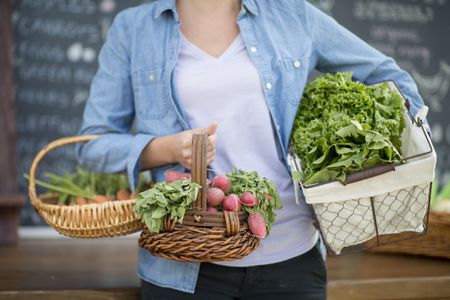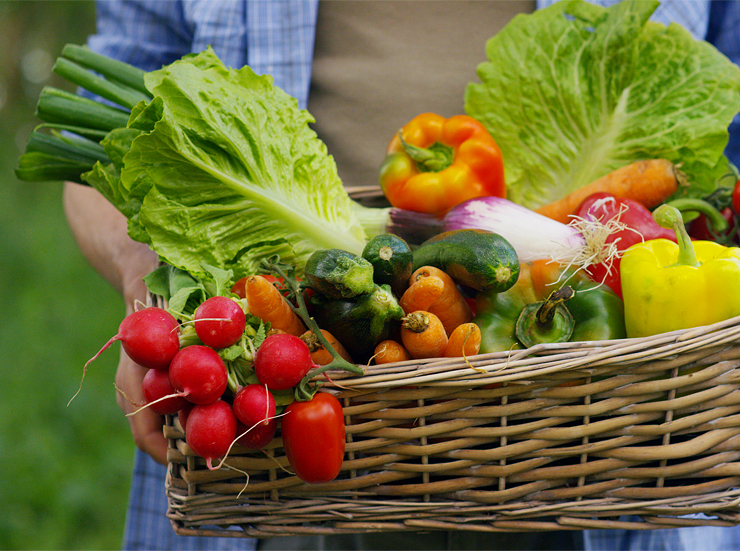
With the arrival of autumn just around the corner, it is time to consider what to sow in September in our garden. There are many options available. In September the children return to class, many people resume their routine. The orchards are being planted again after many fruits, vegetables, and vegetables in August. Therefore, it is time to consider what to plant in september to organize our planting calendar.
What to plant in September?
It is also very useful information if you like to plant in pots indoors and want to go according to the season, of course. In September, the rains return, the days begin to shorten and the temperatures become milder. Each area is different, but in general, this pattern is true everywhere. We talked about what to sow in the northern hemisphere since the calendar is different for the southern hemisphere, where they face spring and not fall.

Sow chard
If we are late in August to plant Swiss chard, September is another good time. Swiss chard can be sown throughout the year, but it is preferable to avoid the cold months. Hence September is still a good month to grow it. They will have to be watered daily, drip if possible, avoiding that the waterfalls directly on the leaves so that they do not rot, and with a separation of between 30 – 40 cm between the seeds so that they have room to grow. When to plant green beans?
Grow artichokes
The artichoke prefers temperate temperatures, so September is a good month to plant this vegetable. It can be watered by dripping or by flooding the furrow in which we plant the artichokes, but as long as we are sure that the land drains the water very well. They should be planted in a row and it must be borne in mind that it is advisable not to rotate the land in which the artichoke has been grown, but to keep it for several years, so the ideal is to place it in an area away from the land in the do not bother.
Plant celery in September
Since it can withstand light frosts, subjecting a celery plantation to extreme cold is not recommended, September is a great month to plant celery. We will need a soil very rich in nutrients and deep, not too abundant but frequent watering and plant it in rows.
When it comes to picking it up, removing it from the roots is unnecessary, but cutting the plant at ground level is enough. In this way, the plant will grow again without us having to sow again.
Sow broccoli in September
Broccoli or broccoli is a plant that perfectly withstands the cold, so September is a good month to plant it and begin to grow in a cold season. It needs constantly moist soil and once it has grown, it is advisable to drip or water the broccoli stem to prevent it from rotting.
When harvesting it, you have to cut the central head of the broccoli and cover the stem that remains in the ground again so that it germinates again. Therefore, it is recommended to grow it in a secluded area, as it will not be a rotating crop.
The best time to plant zucchini
Sowing zucchini in September is a perfect time since they grow in just 40 days and need temperatures that are not extreme. The soil in which we plant them must always be humid but not flooded and it is better to choose an area with a lot of sun for them.
The flower that comes out of the zucchini is also eaten, so when you pick this vegetable, do not discard it and try to cook it.
Sowing onions
The months in which the rain is not constant are good to plant the onions since they must be watered until the bulb grows and afterward, the watering should be less frequent. Hence, September is still a good time to plant onions. After four months, we will be able to collect them.
Plant cauliflowers
To collect cauliflowers in winter, before the strongest cold arrives, the ideal is to plant them at the latest in September, the month in which we have already passed the greatest heat, which is not suitable for cauliflower either. You will need drip irrigation to prevent the leaves from getting wet and rotting.
Grow endives
If we plant endive in September we can collect it during the fall, although the reality is that it can be sown throughout the year. This plant needs to be transplanted after 25 days of its cultivation because when it grows, it will need more space. This planting should be in rows and leaving 50 cm between plants. They need the ground constantly humid and it is necessary to avoid that the leaves get wet.
Plant spinach
There are many varieties of spinach, so it can be planted throughout the year. If we want to sow them in September, it is best to leave it for the end of the month, when autumn is closer. That way, the heat won’t sour the flavor of the spinach if it ripens too quickly.
It should be planted in a shady area and in soils that are always humid, thanks to irrigation. Just a couple of months after planting, we can collect them.
Growing peas
The pea is a crop that works very well for the winter thanks to its high tolerance to cold and frost. Around 20º C is when it best develops. They should be planted in rows and the soil should be moist but not excessively moist. They must be collected when the pods are full but before the pea hardens because then the effort will not help.
Sow beans
From September to March, we will be able to sow beans in our garden. The seeds should be planted in furrows, with a spacing between seeds of 30 cm and a depth of no more than 5 cm. In just 10 days, they will have germinated and it is a crop that can be producing beans for years. They should be sown in areas with a lot of suns and in moist but well-drained soils.
Plant lettuce
Lettuces always need moist soil and it is better that we choose months in which the heat is not very intense to grow them, although depending on the variety, it can bear it well. You have to choose a plot of land between sun and shade to grow correctly and with continuous irrigation.
In addition, if you are a novice with orchards, we advise you to start planting lettuces because it is an easy and fast crop that will give the first lettuces in two months.
Grow lentils
We all sowed lentils in a yogurt cup and among cotton balls when we went to school, which shows that these legumes are very grateful and that they germinate very quickly.
The lentil crop must be watered daily and protected from frost. They are ready to pick when the lentils turn green to yellow.



